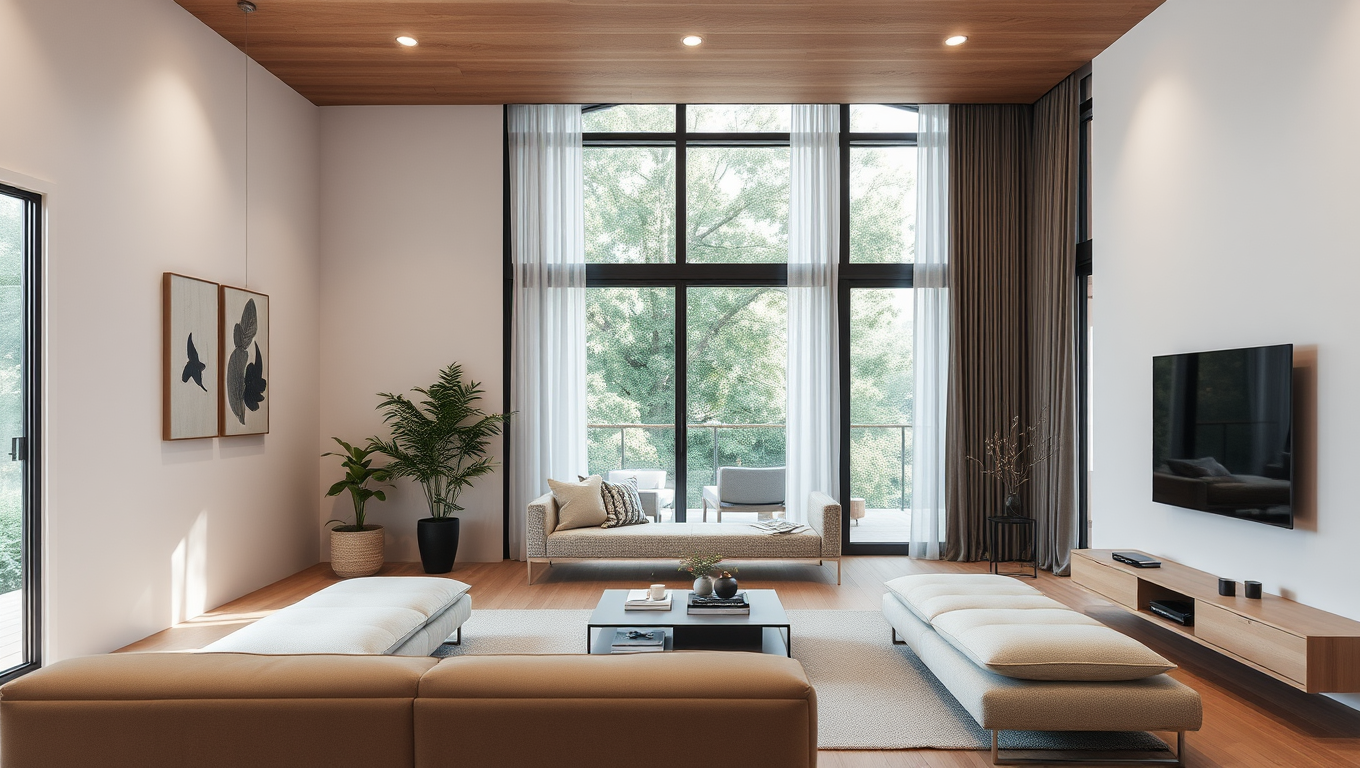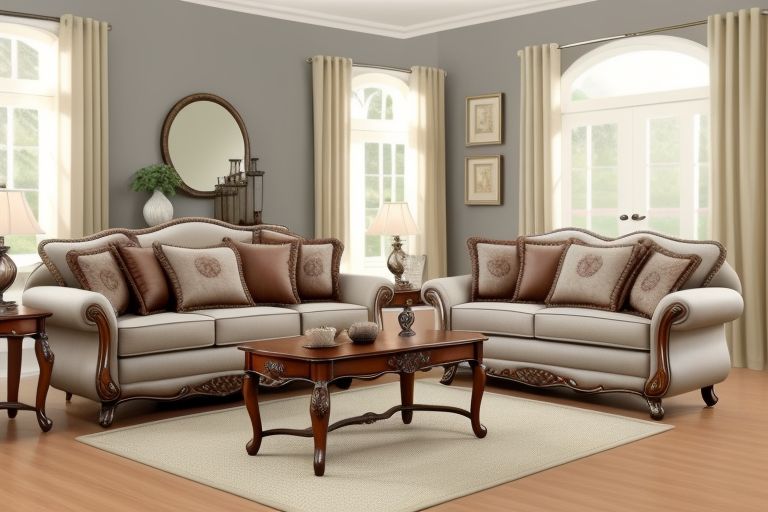Home makeovers can be an exciting and transformative experience, but they can also be fraught with challenges and potential pitfalls. Whether you’re undertaking a small renovation or a complete home overhaul, it’s essential to be aware of common mistakes that can derail your project. In this comprehensive guide, we’ll explore the most frequent home makeover mistakes and provide practical tips on how to avoid them.

1. Lack of Planning
Mistake:
One of the most common mistakes in home makeovers is diving into the project without a clear plan. This can lead to confusion, delays, and unexpected costs.
How to Avoid:
- Create a Detailed Plan: Outline your goals, budget, timeline, and specific tasks. Include a list of materials and resources needed.
- Consult Professionals: Seek advice from architects, designers, or contractors to ensure your plan is feasible and comprehensive.
- Use Planning Tools: Utilize software or apps designed for home renovation planning to keep track of progress and expenses.
Table: Planning Checklist
| Task | Description | Deadline | Responsible Party |
|---|---|---|---|
| Define Goals | Determine the purpose and scope of the makeover | [Date] | Homeowner |
| Set Budget | Establish a realistic budget | [Date] | Homeowner |
| Hire Professionals | Find and hire necessary professionals | [Date] | Homeowner |
| Create Timeline | Develop a detailed timeline for the project | [Date] | Homeowner |
| Purchase Materials | Order all required materials and supplies | [Date] | Homeowner |

2. Ignoring the Budget
Mistake:
Underestimating costs or failing to stick to a budget can lead to financial strain and incomplete projects when doing a home makeover
How to Avoid:
- Set a Realistic Budget: Research costs thoroughly and include a contingency fund for unexpected expenses.
- Track Expenses: Keep a detailed record of all expenditures and compare them against your budget regularly.
- Prioritize Spending: Focus on essential items first and consider cost-effective alternatives for non-essential elements.
List: Budgeting Tips
- Research average costs for materials and labor in your area.
- Include a 10-20% contingency fund for unexpected expenses.
- Regularly review and adjust your budget as needed.
- Avoid impulse purchases and stick to your plan.
3. Skipping Permits and Regulations
Mistake:
Overlooking necessary permits and regulations can result in fines, delays, and even the need to undo completed work.
How to Avoid:
- Research Local Regulations: Understand the permits and regulations required for your project.
- Apply Early: Submit permit applications well in advance to avoid delays.
- Consult Professionals: Work with contractors who are familiar with local building codes and regulations.
Table: Common Permits and Regulations
| Permit/Regulation | Description | Required For | Application Process |
|---|---|---|---|
| Building Permit | Authorization for structural changes | Major renovations, additions | Submit plans to local building dept |
| Electrical Permit | Approval for electrical work | Rewiring, new installations | Apply through local electrical dept |
| Plumbing Permit | Approval for plumbing work | New plumbing, major repairs | Apply through local plumbing dept |
| Zoning Permit | Compliance with zoning laws | Additions, new structures | Check with local zoning office |

4. Choosing the Wrong Materials
Mistake:
Selecting materials that are not suitable for your climate, lifestyle, or design can lead to premature wear and additional costs.
How to Avoid:
- Research Materials: Understand the pros and cons of different materials and choose those that fit your needs.
- Consider Durability: Opt for materials that are durable and easy to maintain.
- Consult Experts: Seek advice from professionals to ensure you’re making the best choices.
List: Factors to Consider When Choosing Materials
- Climate and weather conditions
- Durability and maintenance requirements
- Aesthetic appeal and design compatibility
- Cost and availability
- Environmental impact and sustainability
5. Overlooking Lighting

Mistake:
Neglecting lighting can result in a space that feels dark, uninviting, or impractical. This is a common mistake in a home makeover
How to Avoid:
- Plan Lighting Early: Incorporate lighting into your initial design plan.
- Layer Lighting: Use a combination of ambient, task, and accent lighting to create a balanced and functional space.
- Consider Natural Light: Maximize natural light by using windows, skylights, and reflective surfaces.
Table: Types of Lighting
| Type of Lighting | Description | Best Used For | Examples |
|---|---|---|---|
| Ambient Lighting | General illumination for overall visibility | Living rooms, bedrooms, kitchens | Ceiling lights, chandeliers |
| Task Lighting | Focused lighting for specific tasks | Kitchens, offices, bathrooms | Under-cabinet lights, desk lamps |
| Accent Lighting | Highlighting specific features or areas | Art displays, architectural features | Spotlights, wall sconces |
| Natural Lighting | Light from natural sources | All rooms | Windows, skylights |
6. Ignoring Functionality
Mistake:
Focusing solely on aesthetics without considering functionality can lead to a beautiful but impractical space.
How to Avoid:
- Prioritize Functionality: Ensure that your design meets the practical needs of your household.
- Consider Traffic Flow: Plan the layout to allow for easy movement and access.
- Incorporate Storage: Include ample storage solutions to keep the space organized and clutter-free.
List: Functional Design Tips
- Plan for adequate storage in every room.
- Ensure that furniture placement allows for easy movement.
- Choose durable and easy-to-clean materials for high-traffic areas.
- Consider the needs and habits of all household members.

7. Underestimating Time
Mistake:
Failing to allocate enough time for the project can lead to rushed work, mistakes, and extended disruptions.
How to Avoid:
- Create a Realistic Timeline: Break down the project into manageable phases and allocate sufficient time for each.
- Account for Delays: Build in extra time for potential delays and unforeseen issues.
- Monitor Progress: Regularly review the timeline and adjust as needed to stay on track.
Table: Sample Project Timeline
| Phase | Tasks | Estimated Duration | Start Date | End Date |
|---|---|---|---|---|
| Planning | Define goals, set budget, hire professionals | 2-4 weeks | [Start Date] | [End Date] |
| Design | Create design plan, select materials | 4-6 weeks | [Start Date] | [End Date] |
| Permits and Approvals | Apply for and obtain necessary permits | 2-8 weeks | [Start Date] | [End Date] |
| Construction | Demolition, structural changes, installations | 8-12 weeks | [Start Date] | [End Date] |
| Finishing Touches | Painting, flooring, final installations | 2-4 weeks | [Start Date] | [End Date] |
| Final Inspection | Ensure all work meets standards and regulations | 1 week | [Start Date] | [End Date] |

8. Neglecting to Hire Professionals
Mistake:
Attempting to DIY complex tasks without the necessary skills can lead to subpar results and potential safety hazards.
How to Avoid:
- Know Your Limits: Recognize which tasks require professional expertise and which you can handle yourself.
- Hire Qualified Professionals: Research and hire reputable contractors, electricians, plumbers, and other specialists.
- Check Credentials: Verify licenses, insurance, and references before hiring.
List: Tasks Best Left to Professionals
- Electrical work
- Plumbing installations and repairs
- Structural changes
- HVAC installations and repairs
- Major renovations and additions
9. Overpersonalizing the Space
Mistake:
Making overly personalized design choices can limit the appeal of your home to future buyers.
How to Avoid:
- Balance Personal Taste with Resale Value: Choose designs that reflect your style but also have broad appeal.
- Opt for Neutral Bases: Use neutral colors and classic designs for large, permanent elements, and add personality with easily changeable decor.
- Consult a Real Estate Agent: Get advice on which design choices may impact your home’s resale value.
Table: Personalization vs. Resale Value
| Element | Personalization Tips | Resale Value Tips |
|---|---|---|
| Wall Colors | Use bold colors in small, easily repainted areas | Choose neutral colors for main walls |
| Fixtures and Fittings | Select unique, easily replaceable fixtures | Opt for classic, timeless designs |
| Flooring | Experiment with rugs and carpets | Choose durable, neutral flooring |
| Built-in Features | Add personal touches with decor | Keep built-in features simple |

10. Overlooking Small Details
Mistake:
Neglecting small details can detract from the overall quality and finish of your makeover.
How to Avoid:
- Pay Attention to Finishing Touches: Ensure that all trim, paint, and fixtures are properly installed and finished.
- Inspect Work Regularly: Regularly check
Conclusion
Embarking on a home makeover journey can be both exciting and daunting. While the prospect of transforming your living space is thrilling, it’s essential to navigate the process carefully to avoid common pitfalls. By planning meticulously, setting a realistic budget, and adhering to local regulations, you can ensure a smoother and more successful renovation. Choosing the right materials, considering functionality, and paying attention to lighting are crucial steps in creating a space that is both beautiful and practical.
Remember to allocate sufficient time for your project, hire professionals for complex tasks, and strike a balance between personal taste and resale value. By avoiding these common mistakes, you can achieve a home makeover that not only meets your aesthetic goals but also enhances the overall functionality and value of your home.
In summary, a well-executed home makeover requires careful planning, attention to detail, and a willingness to seek professional help when needed. By following the tips and strategies outlined in this guide, you can avoid common pitfalls and create a space that reflects your style, meets your needs, and stands the test of time. Happy renovating!
Trendy But..
Open shelving has become a popular trend in kitchen design, but many homeowners don’t realize the hidden costs associated with this choice. While it may look stylish, open shelving requires constant maintenance to keep items dust-free and organized. Additionally, it can be less energy-efficient than closed cabinets, as it allows warm air to circulate more freely, potentially increasing heating and cooling costs.
Don’t Forget To Vent…
Many homeowners overlook the importance of adequate ventilation when making improvements to their homes. This mistake can lead to poor indoor air quality, increased moisture levels, and even mold growth. Proper ventilation is crucial, especially in areas like bathrooms, kitchens, and basements. Installing exhaust fans, ensuring windows can open, and incorporating air exchange systems can significantly improve the overall health and comfort of your living space. Neglecting ventilation can undo the benefits of other upgrades and potentially create costly problems down the line.



